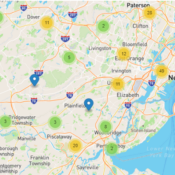An Opportunity for Collaboration
The business community is struggling to find talent with the right skills needed by advancing companies, despite numerous programs and partnerships dedicated to filling the demand for skilled workers.
 NJBIA has long been an advocate for partnerships between business and education. Unfortunately, the results from our 2020 Business Outlook Survey suggest we still have a way to go.
NJBIA has long been an advocate for partnerships between business and education. Unfortunately, the results from our 2020 Business Outlook Survey suggest we still have a way to go.
The Survey Says. Our businesses overwhelmingly favor New Jersey schools when it comes to finding entry-level workers: 81% of New Jersey companies said they are likely to recruit talent from community colleges, while 75% are likely to recruit from four-year institutions. In fact, three-fourths of respondents said they recruit only from New Jersey institutions.
Yet 63% of businesses still have difficulty locating technical/middle-skilled employees, and 62% struggle to find professional/highly skilled talent.
Business, Educators Working Together. These results suggest education institutions are not teaching students what employers need them to know. But it’s not for a lack of trying. From high school career-tech schools to the state’s top universities, educators have committed to helping students map out career paths that provide hands-on experiential learning.
However, institutions cannot prepare students alone; they need businesses to help them understand the skills and knowledge that students need to compete in the 21st century workplace.
Disappointingly, only 26% of New Jersey’s businesses are engaged with their local community college or four-year institution. When asked why, nearly 50% said they either don’t know who to contact or how best to participate, or they are unaware of opportunities to engage with postsecondary institutions.
Bridging the Gap. NJBIA is undertaking a major study to help bridge the gap between what businesses need and what schools teach. NJBIA’s Postsecondary Education Task Force will build on its original 2018 report, The Education Equation, by taking a deep dive into seven different industries to understand their changing dynamics, opportunities and threats. The study will determine key industry trends over time, such as employment, wages and establishment by county.
As workforce dynamics change, business, academia and government must work together to ensure the skills needed for the jobs of tomorrow are embedded within K-16 education today. Collaborating on statewide partnerships will configure a leading innovation economy with a strong workforce pipeline.




